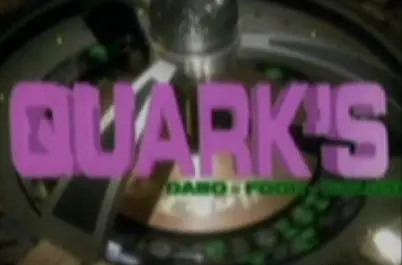data1701d (He/Him)
“Life forms. You precious little lifeforms. You tiny little lifeforms. Where are you?”
- Lt. Cmdr Data, Star Trek: Generations
- 3 Posts
- 10 Comments

 2·17 hours ago
2·17 hours agoYes to the first question. I could be wrong, but I think you have to run umount on the directory sdx is mounted on, not sdx itself.
I’ve never used MATE - almost always been an XFCE guy since I got serious about Linux.
It was sort of an accident. After a while of using Ubuntu in a VM (including a weird IceWM stint), I tried installing Debian on an old laptop I had sitting around. The first attempt, where I tried KDE, something went wrong with the Network Manager install. At this point, I can never know what went wrong - it’s been years All I know is that I chose XFCE on the second attempt and didn’t have the problems, likely due to coincidence. Still, I stick with XFCE out of satisfaction.

 10·3 days ago
10·3 days agoI mean YaST is kind of snazzy, though not enough to pull me from Debian for the moment.

 2·4 days ago
2·4 days agoThis distro’s default background isn’t a knockoff of any particular popular non-*nix proprietary operating system’s default background:


 51·5 days ago
51·5 days agoEverybody knows glorious leader’s operating system. 😉
Honestly, rather than reinstalling, I’d suggest you boot into a live disk and use dd to copy your old disk over to the new one, then use Gpsrted or something to expand your partition. This worked very well when I upgraded the drives for my Debian install - I think it’s been two years since at thid point without any issues.
If you don’t have an extra drive slot, you might need to get an external adapter.
I like Debian. To save you the misery, though, you should probably just use the OBS Flatpak with it. I used to be a “native” pedant, but these days, I at minimum consider Flatpak a VERY necessary evil, if an evil at all.

 1·8 days ago
1·8 days agoiPhone, mostly because of family.
I eventually want to jump to Lineage on Pixel, but that’s not an option for me currently.
My Thinkpad has the factory Windows install on its factory-installed drive, but I only booted it once and otherwise never use it. As the laptop has 2 M.2 slots, I just installed a 2 TB SSD in its secondary slot and installed Debian 12 on it right after I opened the box. I nearly always use that install.
I recently had an exam where the spyware test monitoring Chrome extension was mad about me using Linux (I only use Chromium when I have an exam - otherwise I just use Firefox), so I had to use one of the Windows machines in the lab. This was weird, because I’ve taken other tests (including after this incident) that didn’t have a problem.
Back in high school, I had to use a Chromebook and the occasional iMac, though the Chromebook is technically a Linux device.

 1·6 months ago
1·6 months agoI would say dd is the best solution for a very complete backup, but I’m also a fan of Borg Backup for incremental backups.


1: Agree, mostly. I bought a Thinkpad E16 for its Linux support, though I accidentally got a Realtek one that had few bugs that I’ve since ironed out. My only thought is if you own existing hardware that is still usable, it is worth your time at least trying.
2: I somewhat agree. On my note taking laptop, I go by this philosophy. On my desktop, though, I theme away and still get lots done.
3: I sort of agree with you; I think like you said, if you have one drive for each OS, you won’t have problems - dual booting is fine. I’ve got 2 internal drives in my Thinkpad, though honestly, I hardly use the Windows one. I remember 2 partitions being livable on my Surface Go, but again, I barely touched Windows, so I don’t think it had much chance to bork the bootloader.
4: I agree on the Arch and Gentoo part - after trying to use Debian Testing on several laptops, I found rolling release just isn’t conducive to a no-frills productivity device. Honestly, though, I don’t see that much problem with immutable, especially if you go with Flatpak. I also think any stable distro you like should work so long as it has a backports kernel - I’m using Debian 12 that way on an E16 and it’s been pretty smooth (besides the Realtek thing at the beginning, but I fixed that months ago).
5: Wholeheartedly disagree, mostly because XFCE was excluded. 😭 I feel like X11’s still not that far off the beaten path. This feeling will probably change when XFCE switches; 4.20 comes out with preliminary support in a few weeks, and my bet is 4.22 in 2026 will have full Wayland support.
6: I don’t totally agree with this either. I feel like when it works well natively, go for the native package. If you’re having trouble, switch to the Flatpak. I’ve actually had problems with the VSCodium Flatpak on my laptop not using system environment by default, though there is a fix.